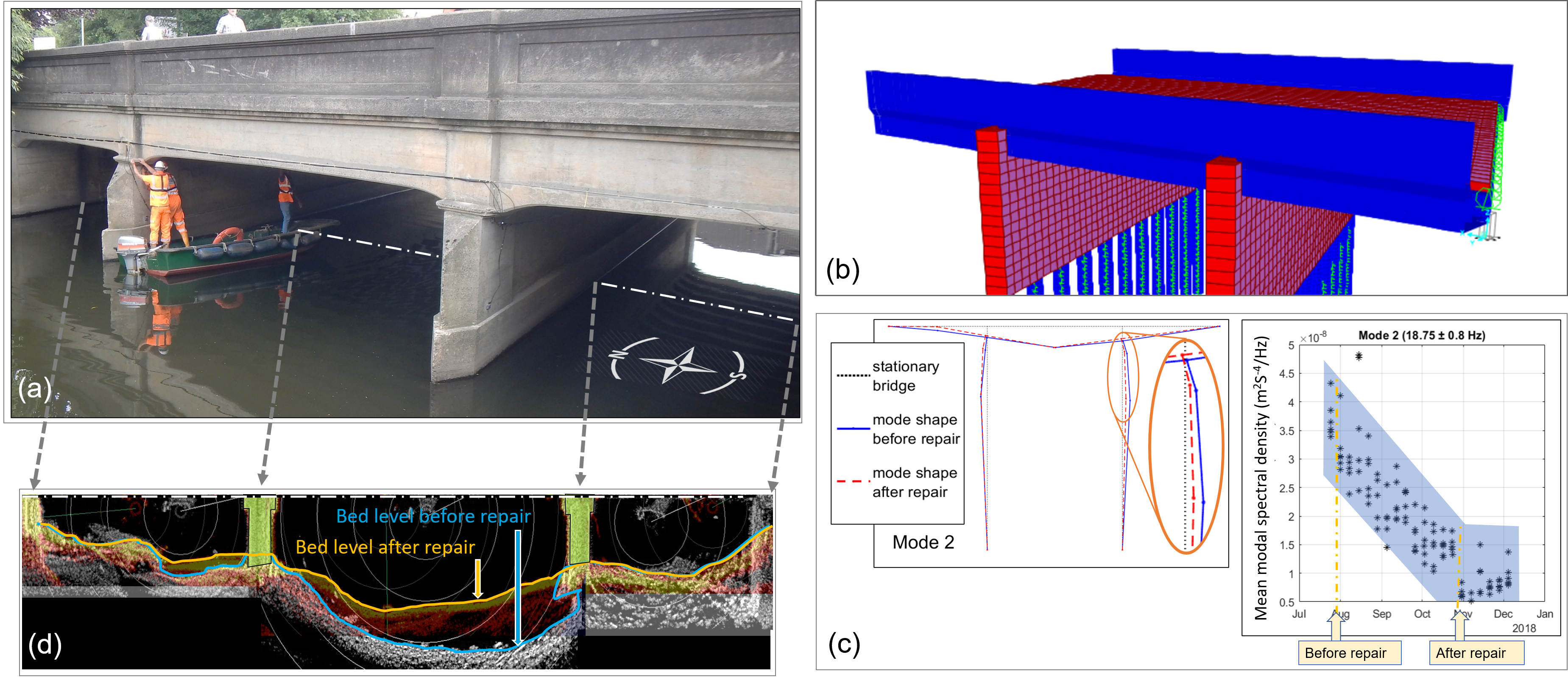
Published on 04 September 2020
Congratulations to the University of Cambridge research team whose work has been nominated for a British Construction Industry Award, 2020. This nomination recognises the successful deployment of an innovative bridge scour monitoring system which formed part of the PhD research undertaken by Kasun Kariyawasam, with the support of Professor Campbell Middleton, Paul Fidler (Laing O'Rourke Centre for Construction Engineering and Technology) and Dr James Talbot (Department of Engineering). Funding for this research was provided by the Gates Cambridge Scholarship, the Cambridge Centre for Smart Infrastructure and Construction (CSIC) and the Laing O’Rourke Centre.
The British Construction Industry Awards (BCIA) are the most prestigious awards in the built environment sector, with winning projects and teams recognised for their achievements within the industry and the public at large. The awards recognise and reward excellence in project delivery and, crucially, delivering outcomes for society, celebrating the hard work and dedication of the whole project team – from clients, architects, designers and contractors.
The University of Cambridge ‘Baildon Bridge Smart Scour Monitoring Project’ has been shortlisted by a panel of esteemed judges in the Digital Initiative of the Year category - recognising projects that are driving the use of smart technologies in construction.
According to Professor Campbell Middleton, Laing O’Rourke Professor of Construction Engineering at the University of Cambridge and Kasun Kariyawasam’s PhD supervisor, “Scour of bridge foundations is by far the most prevalent cause of failure of bridges around the world yet, to date, no practical and effective monitoring technique has been devised to give advanced warning of the risk of impending collapse.”
This nominated project aimed to transform scour monitoring in the UK by exploring smart digital alternatives to the traditional diving inspections. Gates Cambridge Scholar Kasun Kariyawasam explains that “The Baildon bridge repair programme provided us with a rare opportunity to test two smart monitoring techniques, sonar scanning and vibration-based monitoring. The data collected identified the potential for novel ambient-vibration-based approaches (other than natural frequency) to indicate scour. The experimental results of this field trial were validated using a set of small-scale bridge models tested at the University of Cambridge geotechnical centrifuge, with valuable guidance from Professor Gopal Madabhushi and Dr Stuart Haigh.”
|
Figure. Baildon Bridge Scour Monitoring Project (clockwise from top left): (a) Deploying accelerometers, (b) FE model, (c) Experimental data of mode shapes and modal spectral density indicating scour depth change and (d) River bed profile from BridgeCat sonar scanner |
"The vibration-based method is particularly promising," says Dr James Talbot, "because it relies on changes to the boundary conditions of the bridge, which potentially makes it more sensitive than many other attempts at structural health monitoring."
This monitoring project required an interesting installation, including a fair bit of clambering through bank-side vegetation to reach the side of the bridge, says researcher Paul Fidler, reflecting that it is good to get out of the lab occasionally: “It's important to try new techniques out on real-world structures - it's really the only way to see what actually works in practice.”
This research was enabled by project partners - Bradford Metropolitan Council, Gaist Solutions and also received invaluable support from TMS Maritime Limited who assisted with the installation of the sensors. Jenny Roberts provided expert technical advice and carried out the BridgeCat sonar scanning and Naveed Anwar, Senior Engineer Bradford Metropoliton Council, kindly provided Cambridge University with the opportunity to trial this scour monitoring technique on Baildon Bridge.
Congratulations to all the nominated projects.
The text in this work is licensed under a Creative Commons Attribution 4.0 International License.

